
In the center of the portrait, with a hand on the head of a huge mastiff, stands Prince Charles. To his right is Princess Mary, the first royal princess and Prince Jacob. He is still very small and, in accordance with the custom of that time, is dressed in a dress.
The younger princesses Elizabeth and Anna are on the left. Despite the strict etiquette of strict posture, Van Dyck perfectly passed the charm of the tender age of princes and princesses.
The picture creates a festive mood thanks to bright colors, beautifully dressed, beautiful children. An important place in the picture is occupied by beautiful well-groomed dogs.
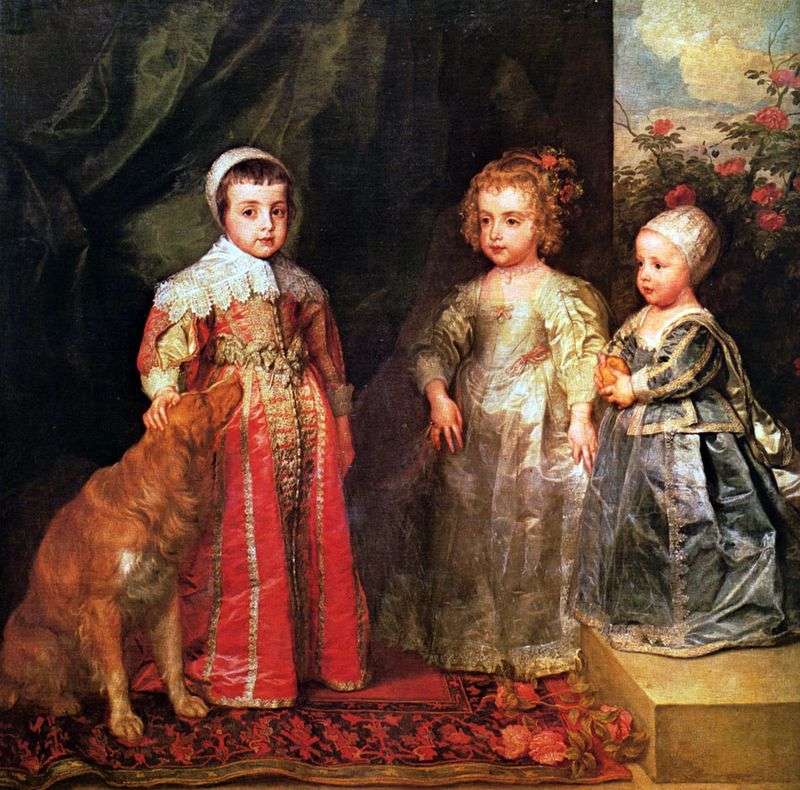 Portrait of three older children of Charles I by Anthony Van Dyck
Portrait of three older children of Charles I by Anthony Van Dyck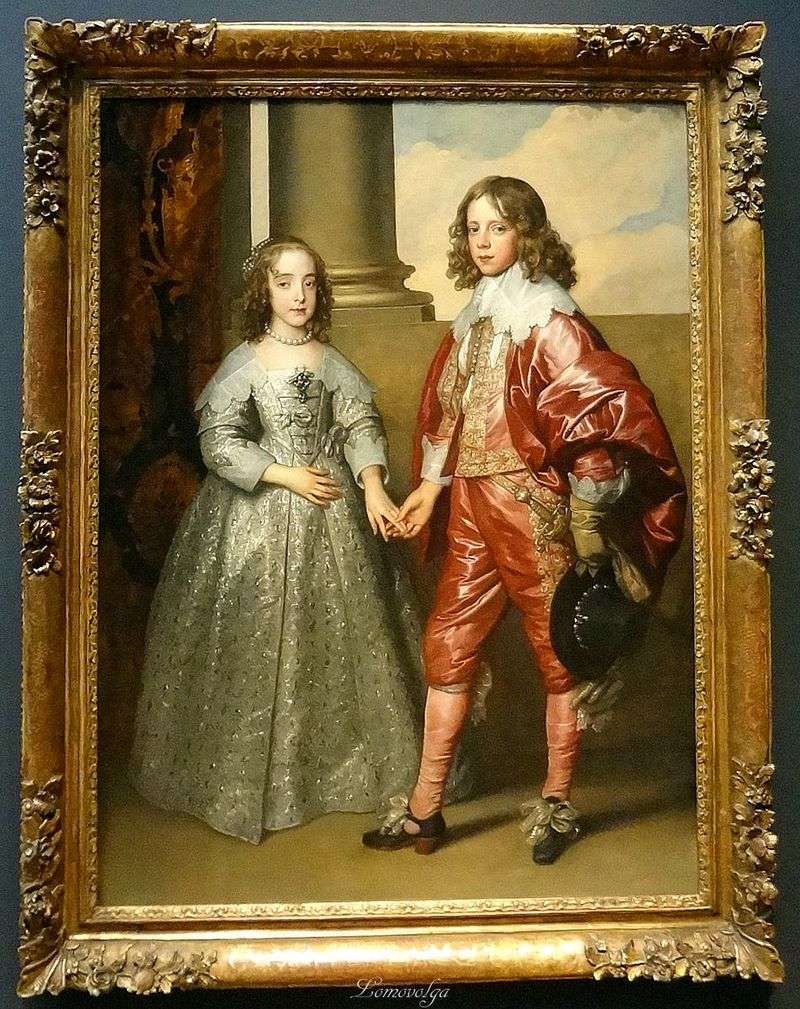 Portrait of Wilhelm of Orange with his bride Maria Stuart by Anthony Van Dyck
Portrait of Wilhelm of Orange with his bride Maria Stuart by Anthony Van Dyck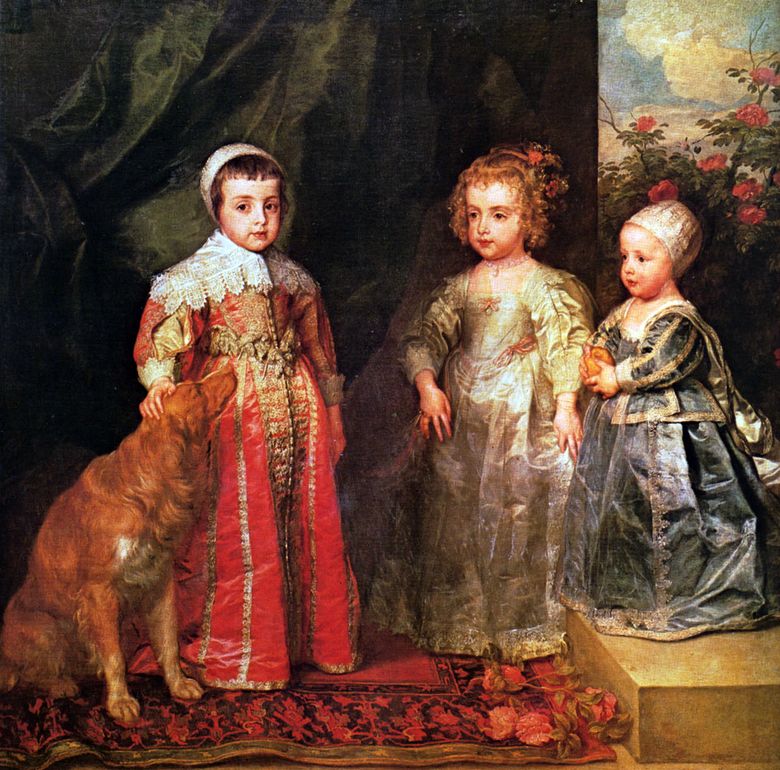 Portrait de trois enfants aînés de Charles I – Anthony Van Dyck
Portrait de trois enfants aînés de Charles I – Anthony Van Dyck Charles I in three angles by Anthony Van Dyck
Charles I in three angles by Anthony Van Dyck Equestrian portrait of Charles I by Anthony Van Dyck
Equestrian portrait of Charles I by Anthony Van Dyck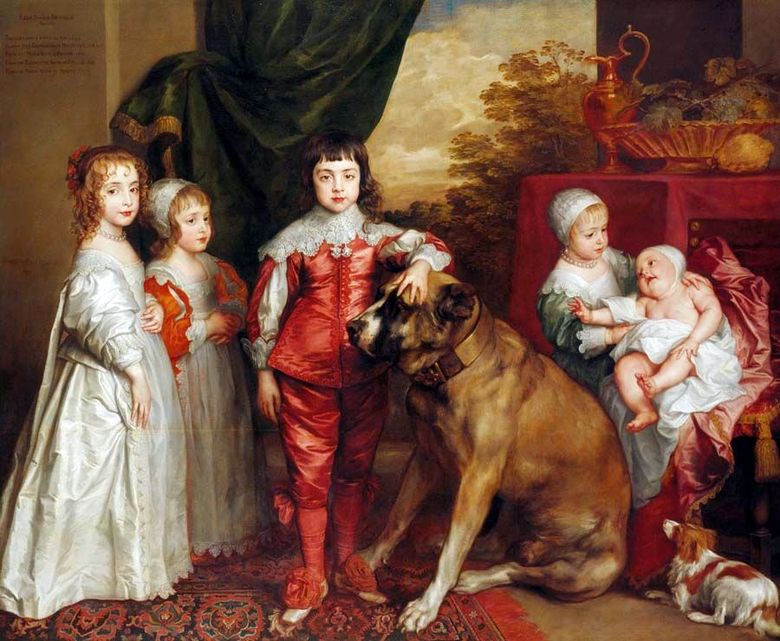 Les enfants de Carl – Anthony Van Dyck
Les enfants de Carl – Anthony Van Dyck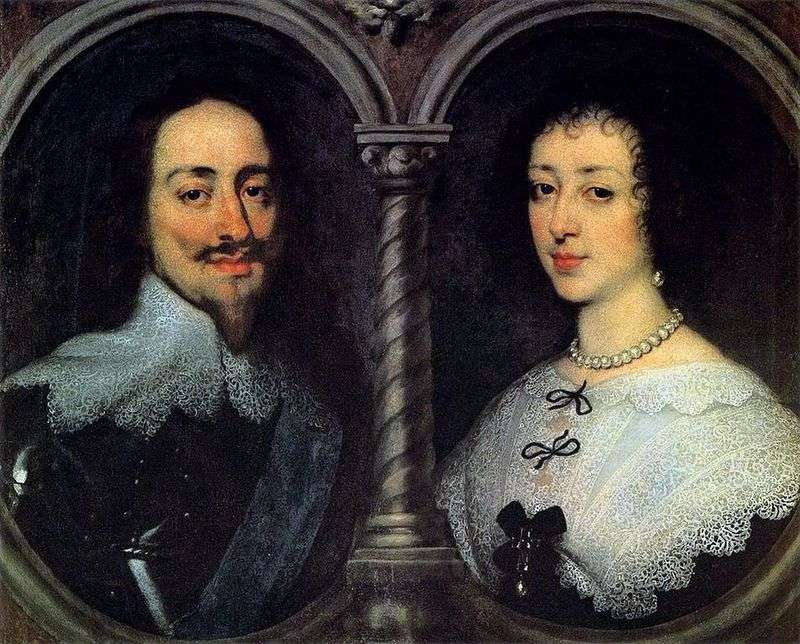 Portrait of Charles I and Henrietta Maria by Anthony Van Dyck
Portrait of Charles I and Henrietta Maria by Anthony Van Dyck Charles I, King of England, on the hunt by Anthony Van Dyck
Charles I, King of England, on the hunt by Anthony Van Dyck